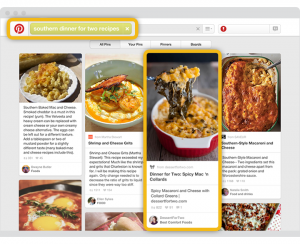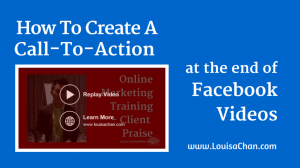— January 28, 2019
Employee engagement is a constant work in progress for organizations. According to Gallup, only 34 percent of employees in the U.S. are engaged in their jobs, with 13 percent who are “actively disengaged”. While these numbers have improved over the years, there is still considerable room for organizations to improve their employee engagement strategy.
Employee engagement is a key factor that impacts business performance and productivity. Not only do your employees’ skills and expertise matter, but their commitment and dedication to the company are vital in long-term growth. Gallup also reports that organizations that prioritize a high-engagement culture see a 21 percent higher profitability compared to those that don’t.
Many view technology as a pit for productivity that distracts people from working. However, when approached properly, technology within the workplace allows businesses to improve communication with employees and can make executing key objectives more efficient.
The most successful companies recognize that the importance of the people in their organization is key to success. Thankfully, the digital era offers marketing leaders the opportunity to leverage modern technology to improve employee engagement. However, creating and implementing a successful employee engagement strategy is often easier said than done.
Improving Your Employee Engagement Strategy: The Dos and Don’ts
Leadership today is vastly different from what it was a few years ago thanks to the disruption of digital and technological advancements. CMOs and marketing leaders today have to tailor their leadership styles to fit the rapidly changing world of marketing in order to connect with employees through digital channels and technology.
This is especially true when engaging with Millennial talent. There’s no question as to if these digital natives have impacted the way leaders have to engage with employees. And it won’t be long before Gen Z enters the workforce, impacting the way leaders must engage and communicate with employees once again.
Whether we’re talking about Millennials or Baby Boomers, CMOs must actively keep employees engaged at all levels to move the business forward. Here are three essential dos and three don’ts from a digital marketing recruitment firm to consider when optimizing your employee engagement strategy.
Dos
Promote knowledge sharing between employees
With the pace that marketing is evolving, the more peers can share what they’re learning with each other, the faster the entire team and organization will grow.
There is never too much knowledge to go around in marketing. Whether it’s best practices in their own marketing function or an article they found that would be helpful to another member, valuable pieces of information from employees help build institutional knowledge and gets new employees to instantly start learning. For example, someone who focuses on SEO can share what the latest changes in Google’s search algorithms are. Collective learning and sharing experiences are additionally valuable in preventing costly mistakes from happening again.
While building a base for knowledge sharing is easy, getting people to want to share is difficult. As most employees may prefer to learn and take in information than actually contribute, consider offering incentives for people to add information. Something as simple as a free lunch or even a cash bonus can excite your team and motivate a wealth of knowledge sharing.
Build an online community for your team such as an internal blog or internal wiki where your team can store internal documentation that’s only accessible by authorized personnel. Using tools like Box and Google Drive make it easy to share files. Here at MarketPro, we use communication tools like Skype and Slack to communicate with remote team members and to share ideas and messages instantly. Using platforms and tools that align with your team’s needs makes communication and collaboration seamless.
Organizations that have the best ideas pull them from different places as businesses need a wide range of inputs and perspectives to make the best, informed decisions. Whether it’s coming from the CMO, a Director of Customer Success, or Social Media Specialist, the transfer of knowledge is a huge asset in a collaborative environment, with resources like technology to help.
Leverage online training resources
Employee training and development is key in keeping your employees engaged and your organization competitive. As a digital marketing recruitment agency, we know employees want the opportunity to learn and develop their skill set. According to Bridge, offering career training and development would keep 86 percent of Millennials from leaving their current position.
The impact of digital makes it challenging for CMOs to be skilled every new development. It’s nearly impossible to be an expert of all of the functions under the marketing umbrella, so leveraging available resources to train employees and keep your team on the cutting-edge is vital.
Offer resources for professional development like online training courses, webinars, workshops, and access to networking events. This isn’t only valuable for employees, but your company, as your team must be equipped to support evolving marketing initiatives to drive business growth.
In the digital age, it’s never been more important to foster a workplace that focuses on continuously learning and evolving.
Get employees passionate about the brand
CMOs who strive to engage employees must get them invested in the organization’s success by getting them emotionally engaged and excited about the brand story and message.
Marketing needs to carry and deliver that brand message to the rest of the organization. It’s inefficient to solely rely on the CMO to do so, because he or she likely doesn’t interact with the majority of the team on a daily basis. However, your marketing team interacts with other people across the organization, and if they’re all bringing the brand story and getting the organization passionate about it, it has a tremendous impact.
Every employee wants to feel like they’re a valuable member of the team that’s working toward a common goal. Without alignment, it’s difficult to execute a strategy and attain goals if everyone on your marketing team is on a different page. So, make sure you’re communicating a consistent message to every employee.
As marketing recruiters, we know it can be difficult to personally get every employee invested in the brand’s vision. However, leveraging the technology you have at hand is key. For instance, promoting a video from the CMO delivers a message more personally than a standard email. Additionally, think of creative ways to use technology to share company news and happenings because no employee likes being out of the loop.
Take it a step further by having leaders on your team have personal conversations with employees to get them to understand his or her role in the organization and how they contribute to the overall strategy. Tie their performance back to how it impacts the bottom-line. The more passionate they are about the brand, the better they will share your brand culture and message with other departments and to customers.
Don’ts
Over-rely on technology to communicate

While technology and communication tools should be taken advantage of to communicate and drive engagement, face-to-face communication is the most effective form in the workplace.
Just like marketing, employee engagement should be centered around the human connection at the end of the day. While it can help, no amount of sophisticated technology fully equates to human interaction. The technology you put into place should not de-humanize engagement but rather enhance the full potential for engagement.
While integrating modern technology into your engagement strategy is important, directing the focus on the human is critical for success. As a CMO, you must build a culture that effectively uses cutting-edge technology to heighten the quality of communication and collaboration from your employees.
Encourage cutthroat peer ratings and reviews
Workplace cultures heavily focused on harsh peer reviews have proven to be problematic. Take Facebook for example where former employees describe its ranking system (often called stack ranking) a cause of the company’s “cult-like” environment. According to a CNBC report, the reliance on peer reviews creates pressure for employees to forge friendships with colleagues and managers for career advancement- creating a culture that discourages any dissent.
Any workplace environment that discourages employees to think for themselves and prevents them from presenting innovative ideas or solutions because they “go against the norm” doesn’t create a rewarding future for the business. Any marketing executive search firm knows that promoting a culture that invites room for constant judgment and criticism isn’t an effective way of managing a team. While there should be room for feedback from employees on leadership, excessive evaluations can do the opposite of getting employees engaged and devoted to business goals.
Enforce top-down leadership
Leadership styles that are very dictatorial and built on demanding what to do create an unenjoyable workplace.
The business world (and marketing in particular) has changed so much that if leaders aren’t asking employees about their opinions, they’re missing out on opportunities. Encourage an open environment for ideas, especially from Millennials and younger generations who are inherently in-tune with digital. Your employees want to be involved in the process and contribute to the success of the business. Making your marketing team feel encouraged to share their perspectives is the key to innovation.
You can invest in technology, but if your team doesn’t feel welcome to voice their opinions, no investment is worth it. Maintaining great employees is challenging in the war for talent. While you can replace subpar tools and devices for better ones, you can’t replace the value of an invaluable employee. Using digital resources as we’ve discussed can enhance engagement and retain top talent.
Leaders have to proactively promote a culture where ideas can flow throughout their team and through different departments. Your employees are your most valuable asset, and fostering an environment that encourages innovation, creativity and collaboration motivates them to put their best efforts into their work.
Conclusion
The integration of technology and the workplace environment is growing at a rapid pace, and it’s up to CMOs to determine how to best leverage it to meet key business goals. Guiding your team in properly using technology will help invite ideas and drive innovation, ultimately enhancing company performance. Most importantly, CMOs must position their employee engagement strategy around the human element to truly drive a shift in the digital world.
We invite you to share your tips for improving employee engagement in the digital age with us. Share them below!
Business & Finance Articles on Business 2 Community
(54)
Report Post






